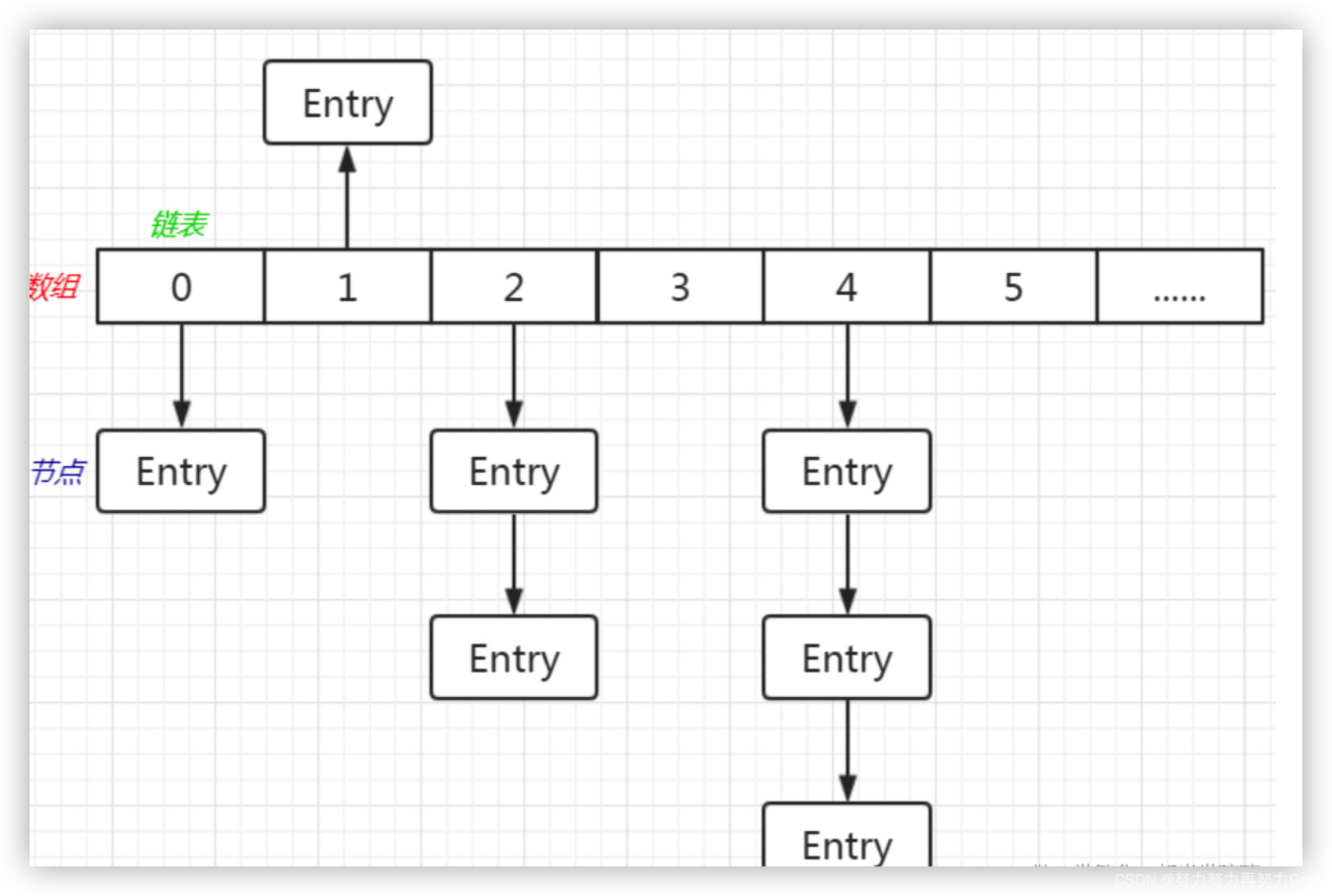更多博客请见 我的语雀知识库
哈希表插入是在尾节点插入,因为需要遍历哈希桶内所有链表节点判断重复
哈希表的底层是由数组、链表和红黑树实现的,数组作为哈希桶。
桶内的结点个数小于8链表实现,大于等于8红黑树实现
Java中所有类都继承了Object类,该类中有一个hashCode方法,是C++实现的native方法,将key的内存地址转化为32位int数a,再对a右移16位得到b,将a与b异或得到c作为key的哈希值。得到的哈希值对哈希桶长度 - 1做&操作,结果就是key要被放入的桶的索引。如果这个结果超过了哈希桶长度,那么就会生成一个新的哈希桶。
//本方法在Objects.java文件内
public native int hashCode();
static final int hash(Object key) {
int h;
return (key == null) ? 0 : (h = key.hashCode()) ^ (h >>> 16);
}
public V put(K key, V value) {
return putVal(hash(key), key, value, false, true);
}
/**
* Implements Map.put and related methods.
*
* @param hash hash for key
* @param key the key
* @param value the value to put
* @param onlyIfAbsent if true, don't change existing value
* @param evict if false, the table is in creation mode.
* @return previous value, or null if none
*/
final V putVal(int hash, K key, V value, boolean onlyIfAbsent,
boolean evict) {
Node<K,V>[] tab; Node<K,V> p; int n, i;
// table未初始化或者长度为0,进行扩容
if ((tab = table) == null || (n = tab.length) == 0)
n = (tab = resize()).length;
// (n - 1) & hash 确定元素存放在哪个桶中,桶为空,新生成结点放入桶中(此时,这个结点是放在数组中)
if ((p = tab[i = (n - 1) & hash]) == null)
tab[i] = newNode(hash, key, value, null);
// 桶中已经存在元素(处理hash冲突)
else {
Node<K,V> e; K k;
//快速判断第一个节点table[i]的key是否与插入的key一样,若相同就直接使用插入的值p替换掉旧的值e。
if (p.hash == hash &&
((k = p.key) == key || (key != null && key.equals(k))))
e = p;
// 判断插入的是否是红黑树节点
else if (p instanceof TreeNode)
// 放入树中
e = ((TreeNode<K,V>)p).putTreeVal(this, tab, hash, key, value);
// 不是红黑树节点则说明为链表结点
else {
// 在链表最末插入结点
for (int binCount = 0; ; ++binCount) {
// 到达链表的尾部
if ((e = p.next) == null) {
// 在尾部插入新结点
p.next = newNode(hash, key, value, null);
// 结点数量达到阈值(默认为 8 ),执行 treeifyBin 方法
// 这个方法会根据 HashMap 数组来决定是否转换为红黑树。
// 只有当数组长度大于或者等于 64 的情况下,才会执行转换红黑树操作,以减少搜索时间。否则,就是只是对数组扩容。
if (binCount >= TREEIFY_THRESHOLD - 1) // -1 for 1st
treeifyBin(tab, hash);
// 跳出循环
break;
}
// 判断链表中结点的key值与插入的元素的key值是否相等
if (e.hash == hash &&
((k = e.key) == key || (key != null && key.equals(k))))
// 相等,跳出循环
break;
// 用于遍历桶中的链表,与前面的e = p.next组合,可以遍历链表
p = e;
}
}
// 表示在桶中找到key值、hash值与插入元素相等的结点
if (e != null) {
// 记录e的value
V oldValue = e.value;
// onlyIfAbsent为false或者旧值为null
if (!onlyIfAbsent || oldValue == null)
//用新值替换旧值
e.value = value;
// 访问后回调
afterNodeAccess(e);
// 返回旧值
return oldValue;
}
}
// 结构性修改
++modCount;
// 实际大小大于阈值则扩容
if (++size > threshold)
resize();
// 插入后回调
afterNodeInsertion(evict);
return null;
}

可以看到,在执行putVal方法之前,会调用native方法hashCode得到哈希值,由于这个方法会让每一个不同的对象都得到不同的哈希值,如果我们希望两个内存地址不同但相同内容的数组的哈希值也相等,就必须重写hashCode方法,使得相同内容的数组的哈希值也相等。
Java为许多常用的数据类型重写了hashCode()方法,使它们只要内容相同哈希值就也相同,比如String,Integer,Double等。比如在Integer类中哈希值就是其int类型的数据。
public static int hashCode(int value) {
return value;
}
/**
Returns a hash code based on the contents of the specified array.
For any two non-null int arrays a and b such that Arrays.equals(a, b),
it is also the case that Arrays.hashCode(a) == Arrays.hashCode(b).
*/
public static int hashCode(int a[]) {
if (a == null)
return 0;
int result = 1;
for (int element : a)
result = 31 * result + element;
return result;
}
通常重写hashCode方法后还需要重写equals方法。这是因为对象通过调用 Object.hashCode()生成哈希值,由于不可避免地会存在哈希值冲突的情况 因此hashCode 相同时 还需要再调用 equals 进行一次值的比较,但是若hashCode不同,将直接判定两个对象不同,跳过 equals ,这加快了冲突处理效率。
Node<K,V> e; K k;
if (p.hash == hash &&
((k = p.key) == key || (key != null && key.equals(k))))
e = p;
//来源于Map.put()方法的底层实现代码的一部分
第三行代码中,由于重写了hashCode方法,导致内容相同的数组具有相同的哈希值,于是判断p中的键是否等于传来的数组(比较地址)肯定是不等于的,于是执行key.equals方法。
因此,重写hashCode方法导致不同地址的对象具有了相同的哈希值后,为了让某些方法的底层实现将它们作为完全相同的对象,需要重写equals方法。
Object 类定义中对 hashCode和 equals 要求如下:
- 如果两个对象的equals的结果是相等的,则两个对象的 hashCode 的返回结果也必须是相同的。
- 任何时候重写equals,都必须同时重写hashCode。
